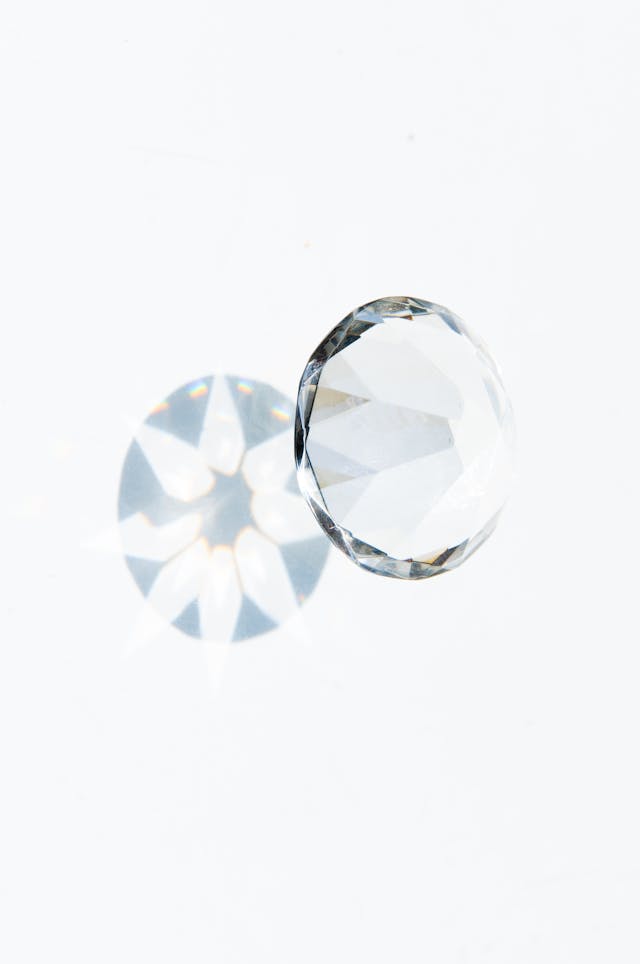
Are Diamonds REALLY Rare?
Share
The Mystique of Diamonds
Diamonds have captivated human fascination for centuries. Their brilliance, durability, and allure have made them symbols of love, power, and prestige. But are diamonds truly as rare as they seem? In this exploration, we'll delve into the myths and realities surrounding diamonds, uncovering the truth behind their scarcity, value, and place in the world of gems.
Dispelling the Myth of Rarity: Diamonds in Perspective
Let's address the elephant in the room: diamonds are often perceived as rare treasures, but the reality is far more nuanced. While diamonds possess undeniable beauty and desirability, their scarcity is often exaggerated. Contrary to popular belief, diamonds, both mined and lab-grown, are not as rare as one might think.
Diamonds: Commonality Amidst Brilliance
At their core, diamonds are made of carbon, a resource abundant in the Earth's crust. Rough diamonds, in fact, are relatively common compared to other gemstones. However, the distinction lies in the quality and desirability of these stones, particularly those used in fine jewelry and engagement rings.
The Rarity Myth Unraveled
The notion of diamonds being rare stems from the scarcity of high-quality, jewelry-grade diamonds. While these gems are indeed less common, they are by no means scarce in the global market. In fact, millions of carats of jewelry-grade diamonds are sold annually, challenging the perception of diamonds as rare commodities.
Exploring Gemstone Rarity (Beyond Diamonds)
While diamonds may steal the spotlight, several gemstones surpass them in rarity and value. Let's take a closer look at some of these hidden treasures:
Sapphires
Characterized by its vivid blue color and velvety appearance, Kashmir sapphire is among the rarest gemstones in existence. With production halted in the 1930s, these exquisite gems remain elusive and highly prized by collectors worldwide.
Rubies
Among rubies, Burma rubies stand out for their exceptional color and clarity. Sourced exclusively from Myanmar, these rubies exhibit unparalleled beauty and rarity, making them highly coveted among gemstone enthusiasts.
Emeralds
Renowned for their rich green hue, emeralds are rarer than diamonds and prized for their exceptional quality. With limited mining locations and distinctive inclusions, high-quality emeralds command premium prices in the gemstone market.
Tsavorite Garnet
Tsavorite garnet, prized for its vibrant green hue, stands as a rare gemstone coveted by collectors and jewelry enthusiasts. Discovered in the 1960s in Kenya and Tanzania, tsavorite garnet captivates with its intense color and exceptional clarity. Its scarcity, stemming from limited mining locations and small crystal sizes, elevates its allure and value in the world of gemstones.
Spinel
Spinels, often overshadowed by their more illustrious counterparts, possess a unique beauty and rarity of their own. Found in a spectrum of colors, including red, pink, blue, and purple, spinels exhibit remarkable brilliance and clarity. Despite their captivating allure, spinels remain relatively unknown, adding to their mystique and desirability among gemstone aficionados.
The Value of Diamonds: Beyond the Glitter
Diamonds have long been synonymous with wealth, power, and endurance. Their value extends beyond their aesthetic appeal, encompassing industrial applications and cultural significance.
Unraveling Diamond Value
Diamonds owe their value to a combination of factors, including their durability, rarity, and symbolism. Unlike other gemstones, diamonds possess unparalleled hardness and resilience, making them ideal for a myriad of industrial and technological purposes.
Mythbusting: Challenging Common Perceptions
Let's confront some common misconceptions surrounding diamond rarity and value, separating fact from fiction:
Myth #1: Mined Diamonds Outshine Lab-Grown Diamonds in Rarity
Contrary to popular belief, lab-grown diamonds are not necessarily less rare than mined diamonds. While mined diamonds dominate the market, the rise of lab-grown diamonds challenges traditional notions of rarity and scarcity.
Myth #2: Diamonds Are Expensive Solely Due to Their Rarity
The high price of diamonds is not solely attributed to their rarity but rather driven by market demand and manipulation. Diamond prices are influenced by factors beyond scarcity, including marketing strategies and industry control.
Myth #3: The World is Running Out of Diamonds
Despite fears of diamond depletion, the world's diamond reserves remain substantial. Advancements in technology have expanded our ability to discover new diamond deposits, mitigating concerns of scarcity in the foreseeable future.
Myth #4: Carat Weight Dictates Diamond Value
While carat weight plays a role in determining a diamond's value, it is not the sole determinant. Factors such as color, clarity, and cut significantly impact a diamond's desirability and market value, transcending mere carat measurements.
Myth #5: Diamonds Reign Supreme as the Most Valuable Gemstone
Diamonds, while esteemed, are not the rarest or most valuable gemstones. Other gems, such as Sapphires and Rubies, surpass diamonds in rarity and exclusivity, challenging their status as the ultimate symbol of luxury.
In conclusion, diamonds occupy a unique place in the world of gemstones, revered for their beauty, durability, and cultural significance. While perceptions of diamond rarity and value may vary, one thing remains clear: diamonds, whether mined or lab-grown, continue to dazzle and inspire generations to come.
